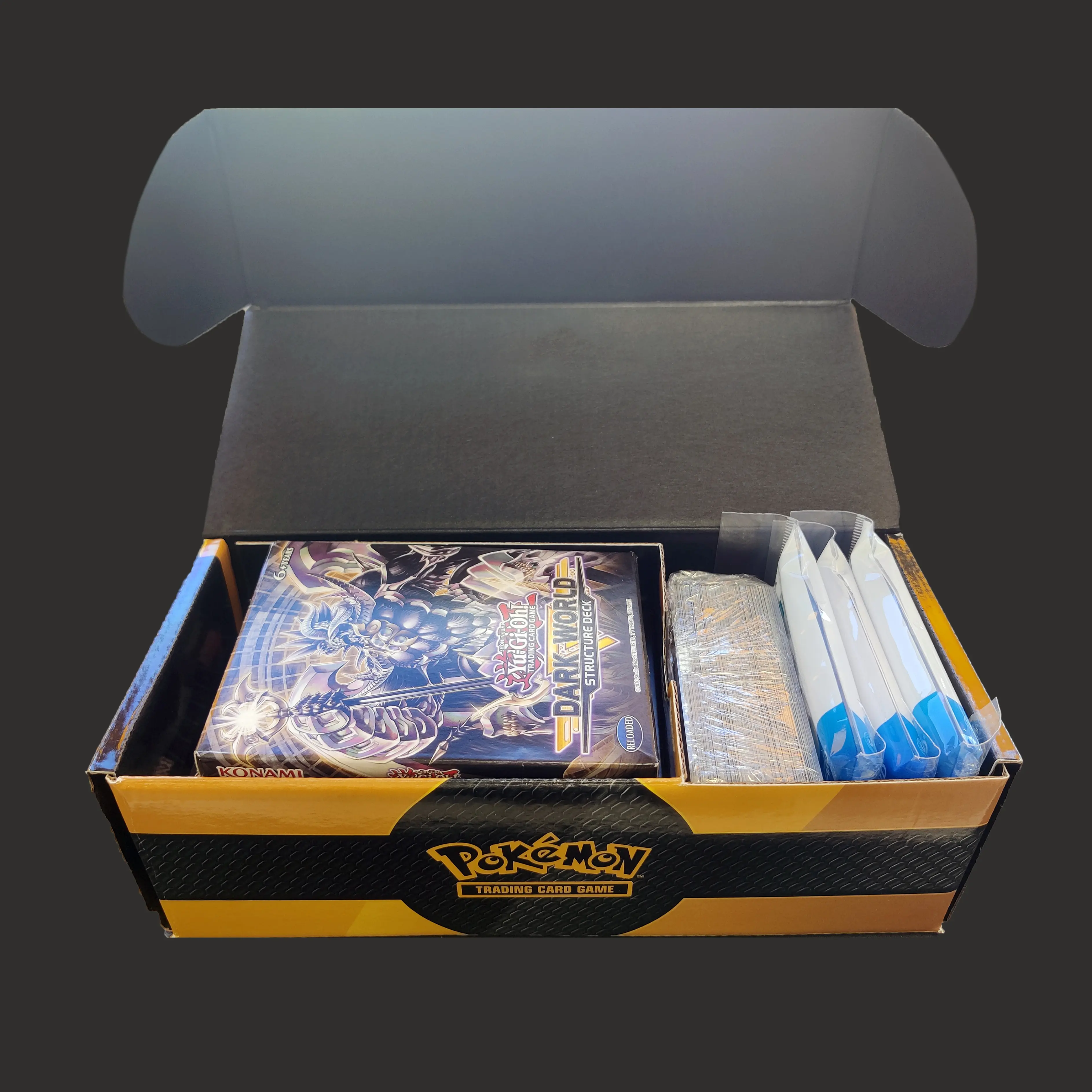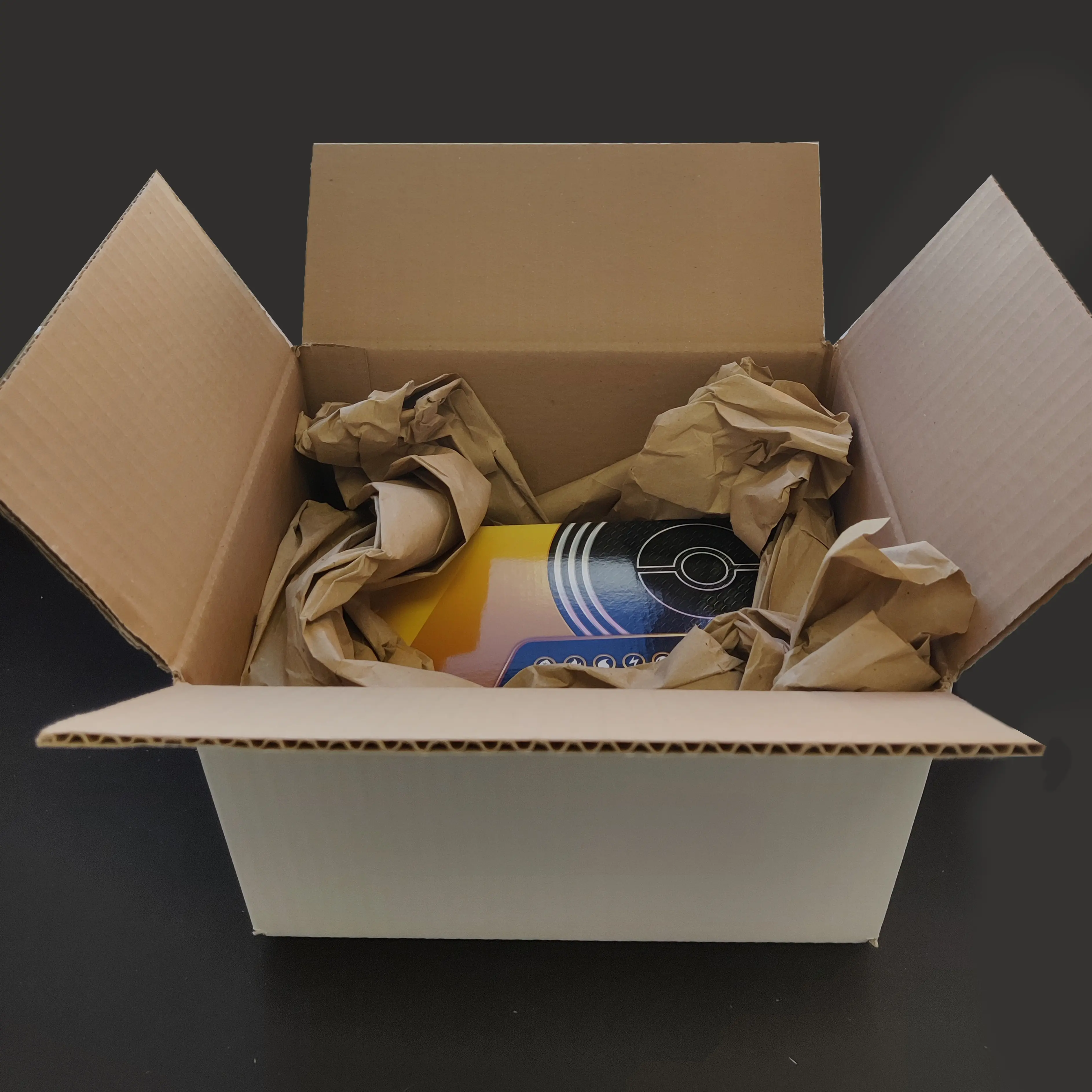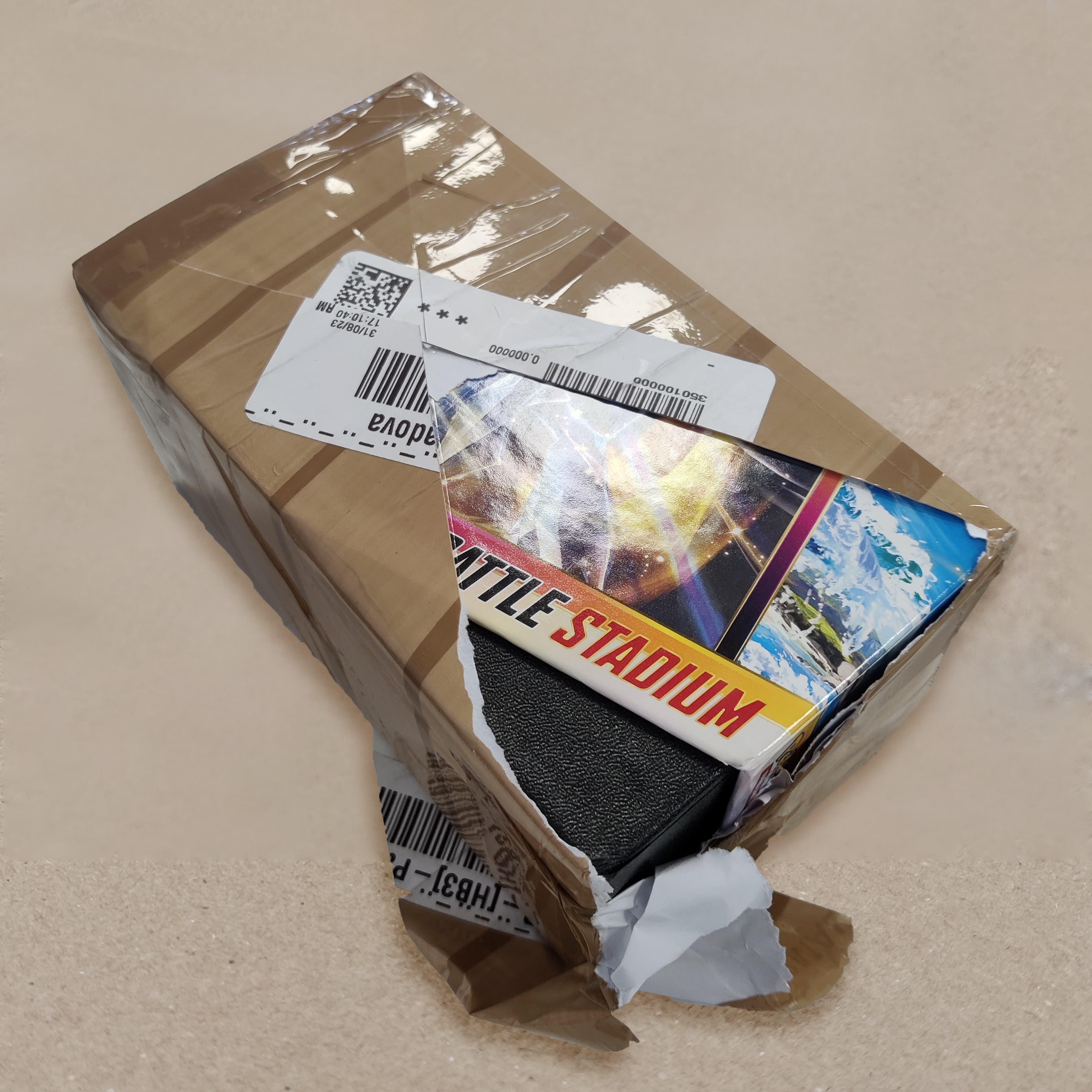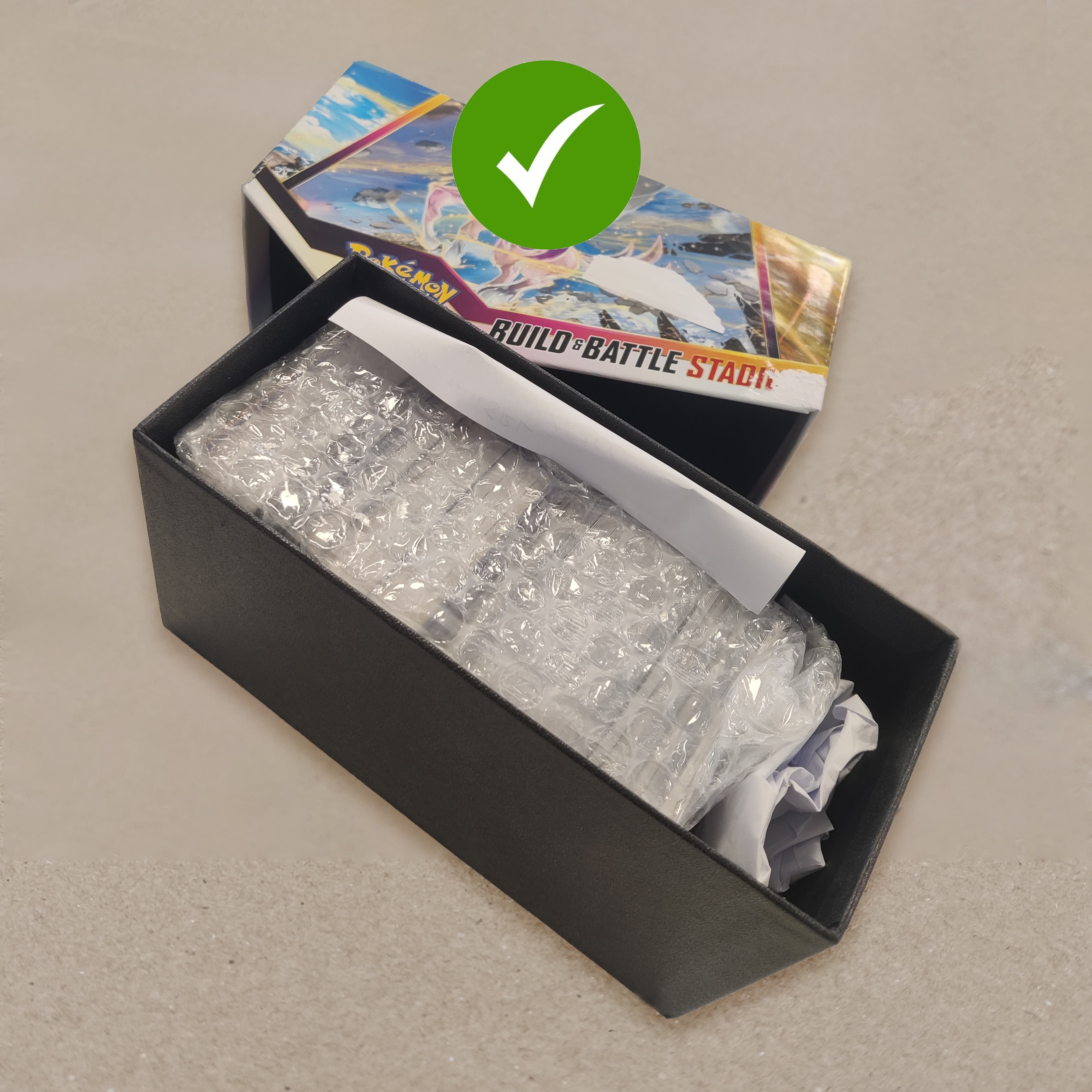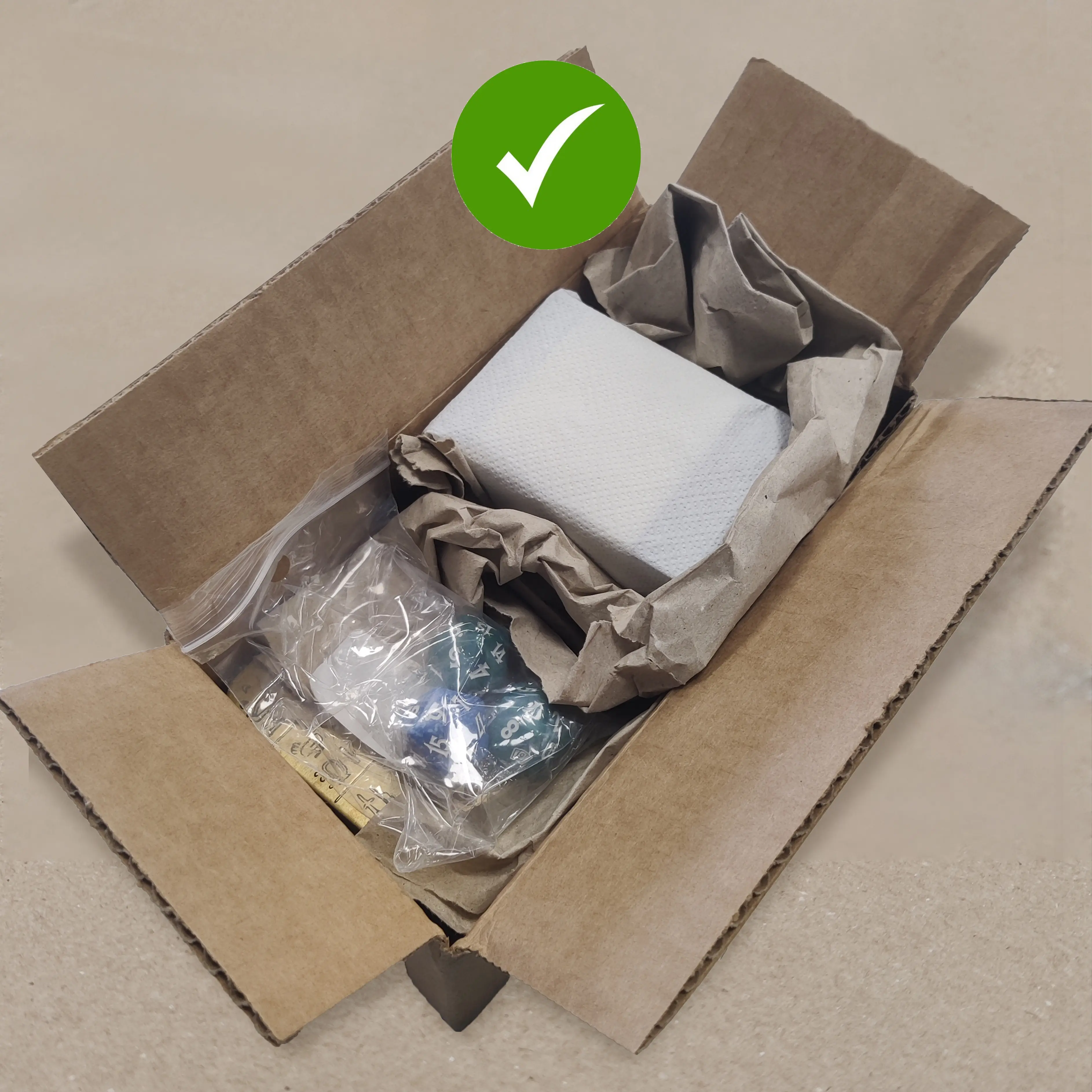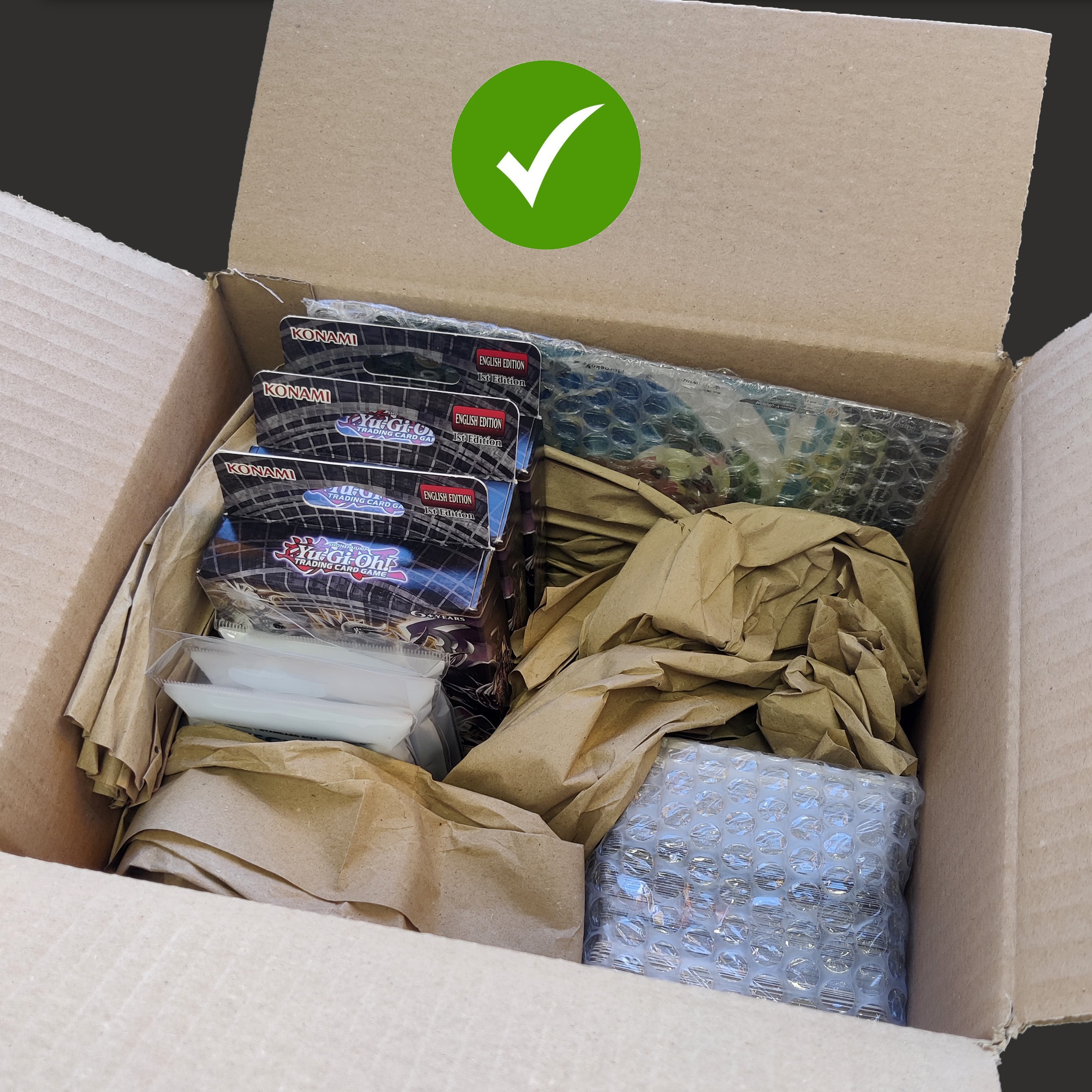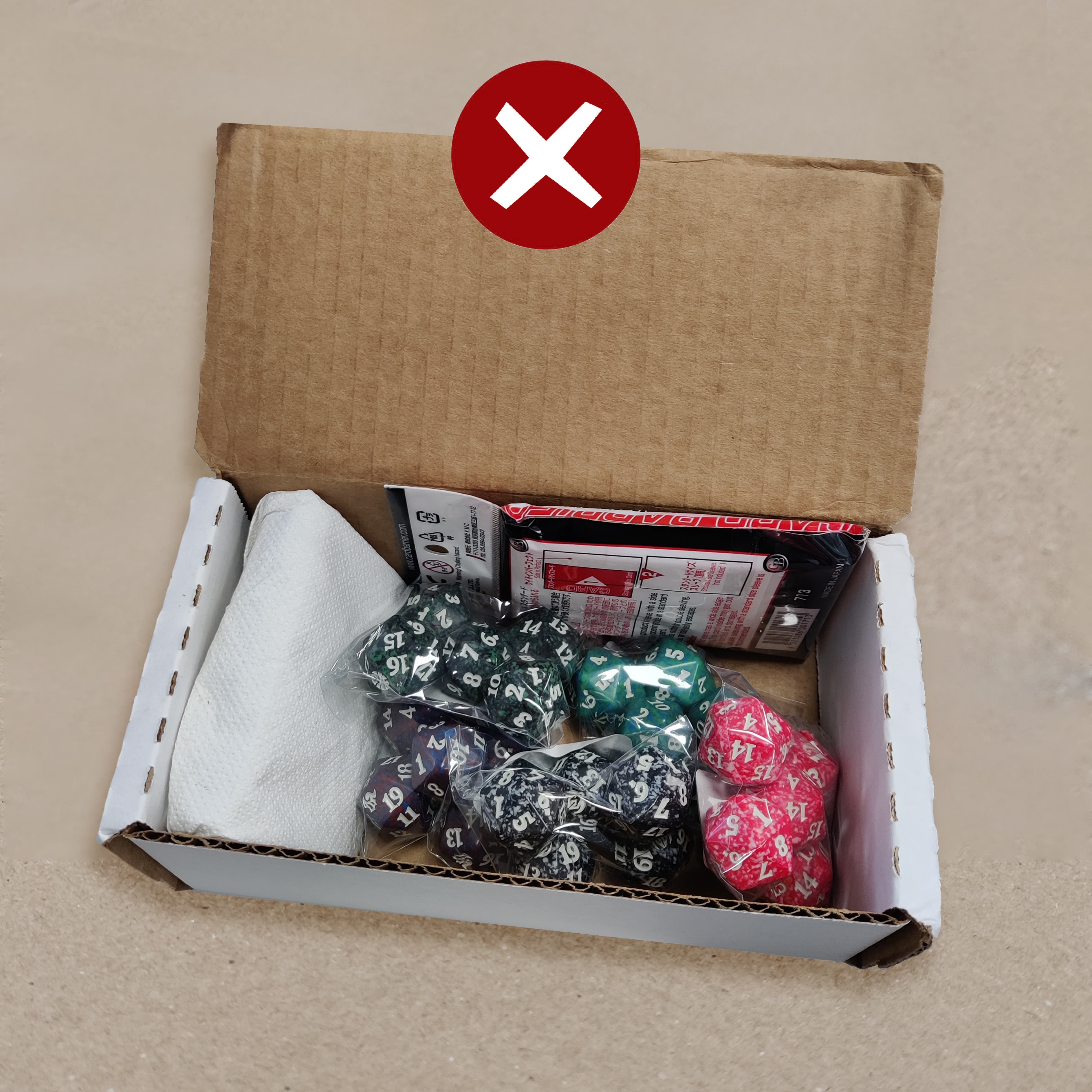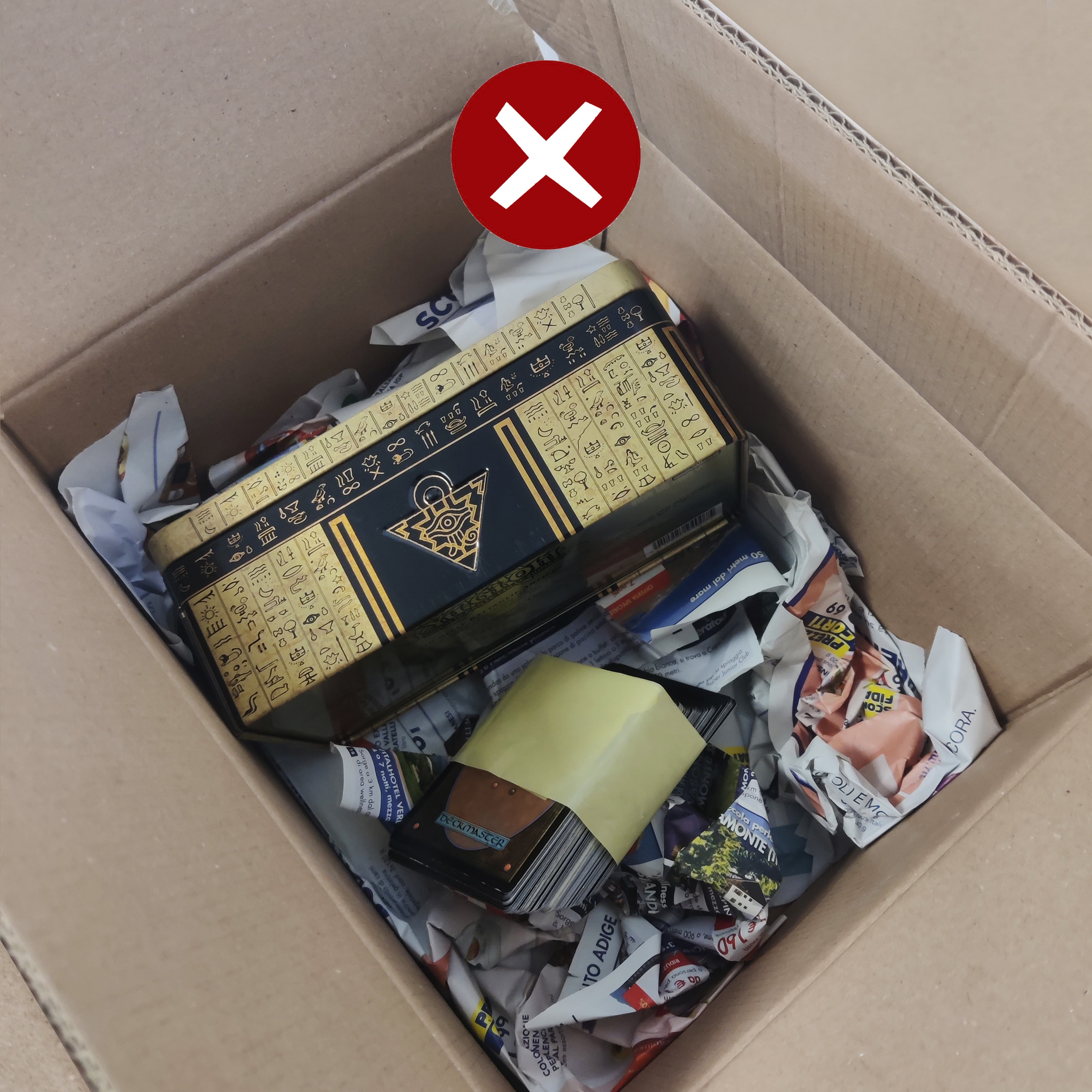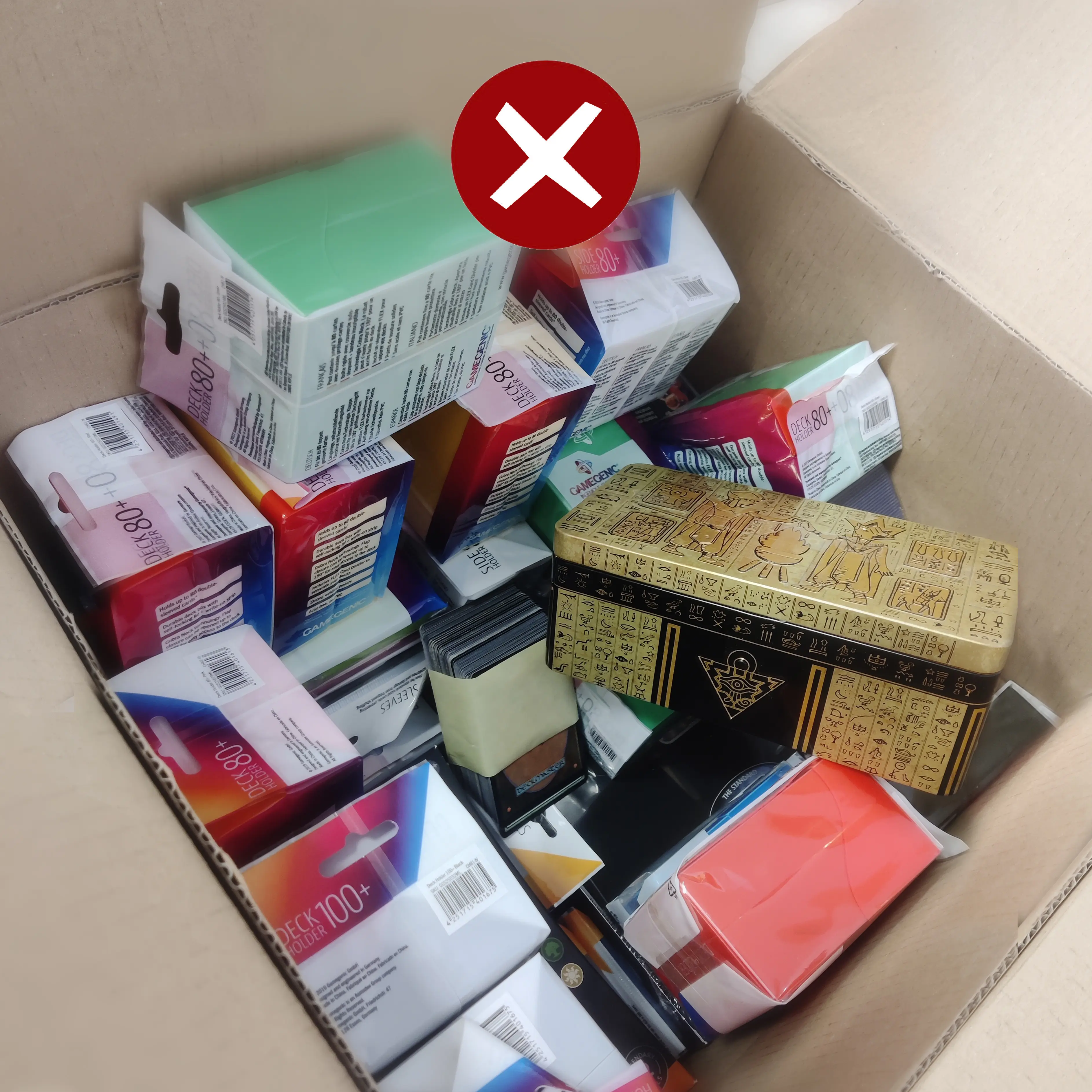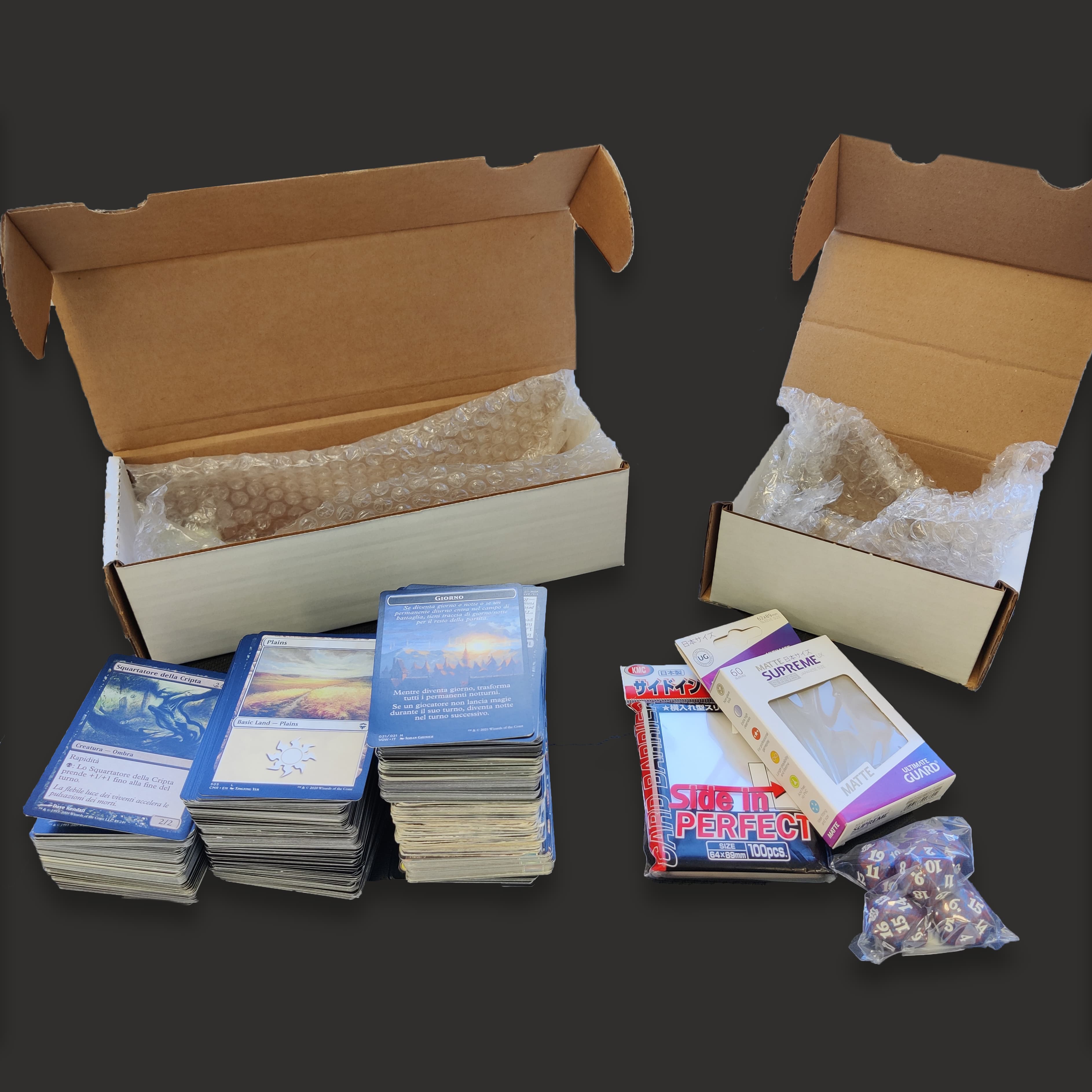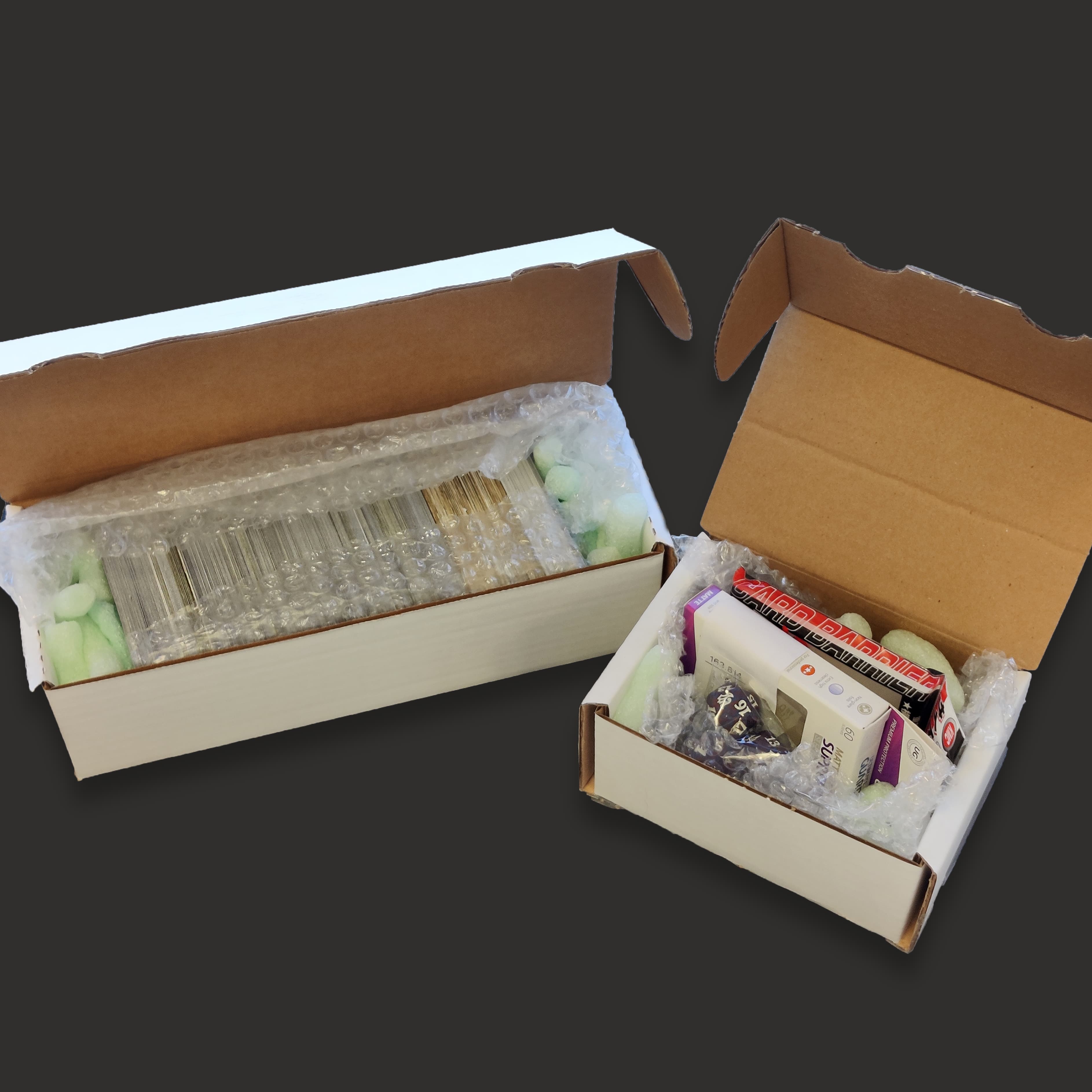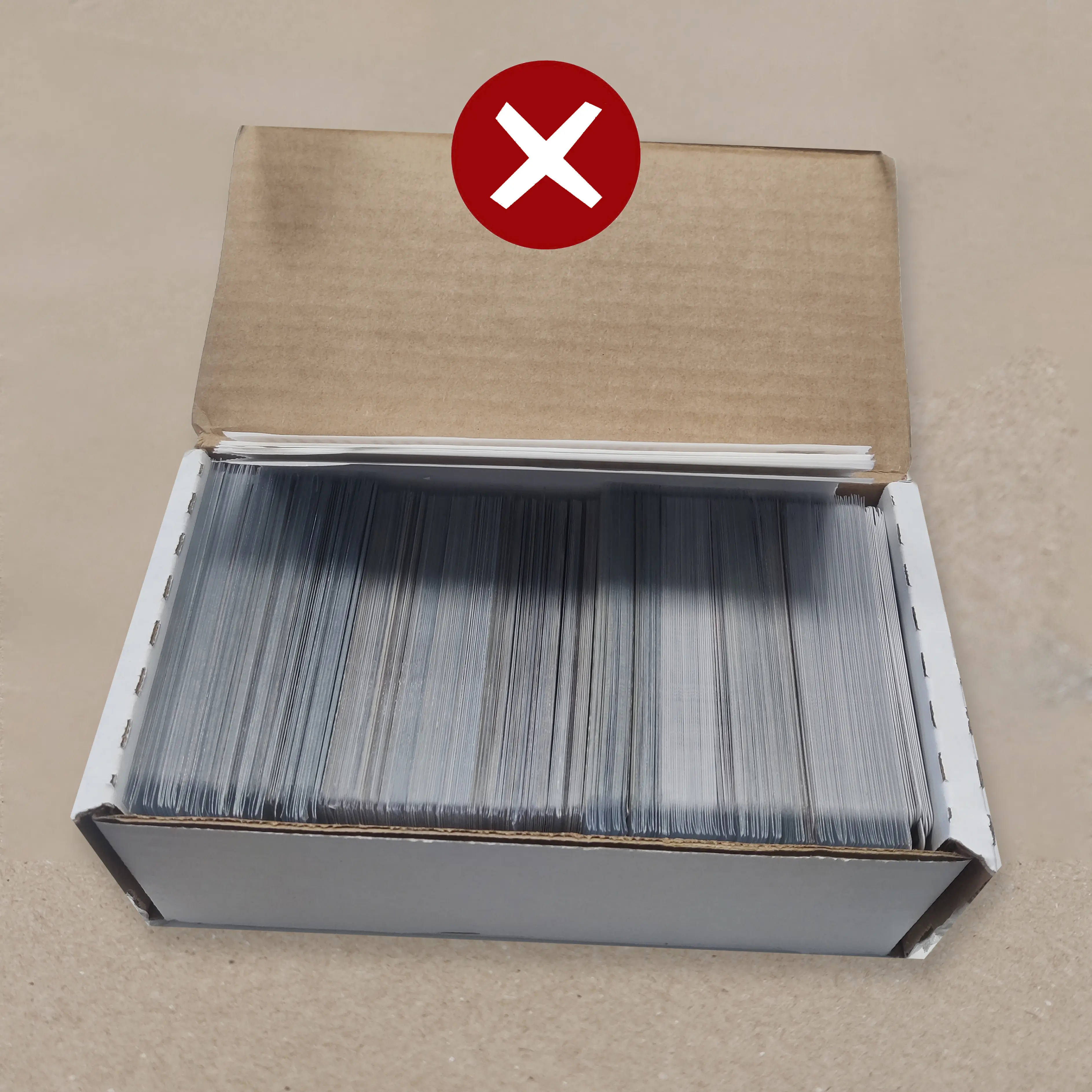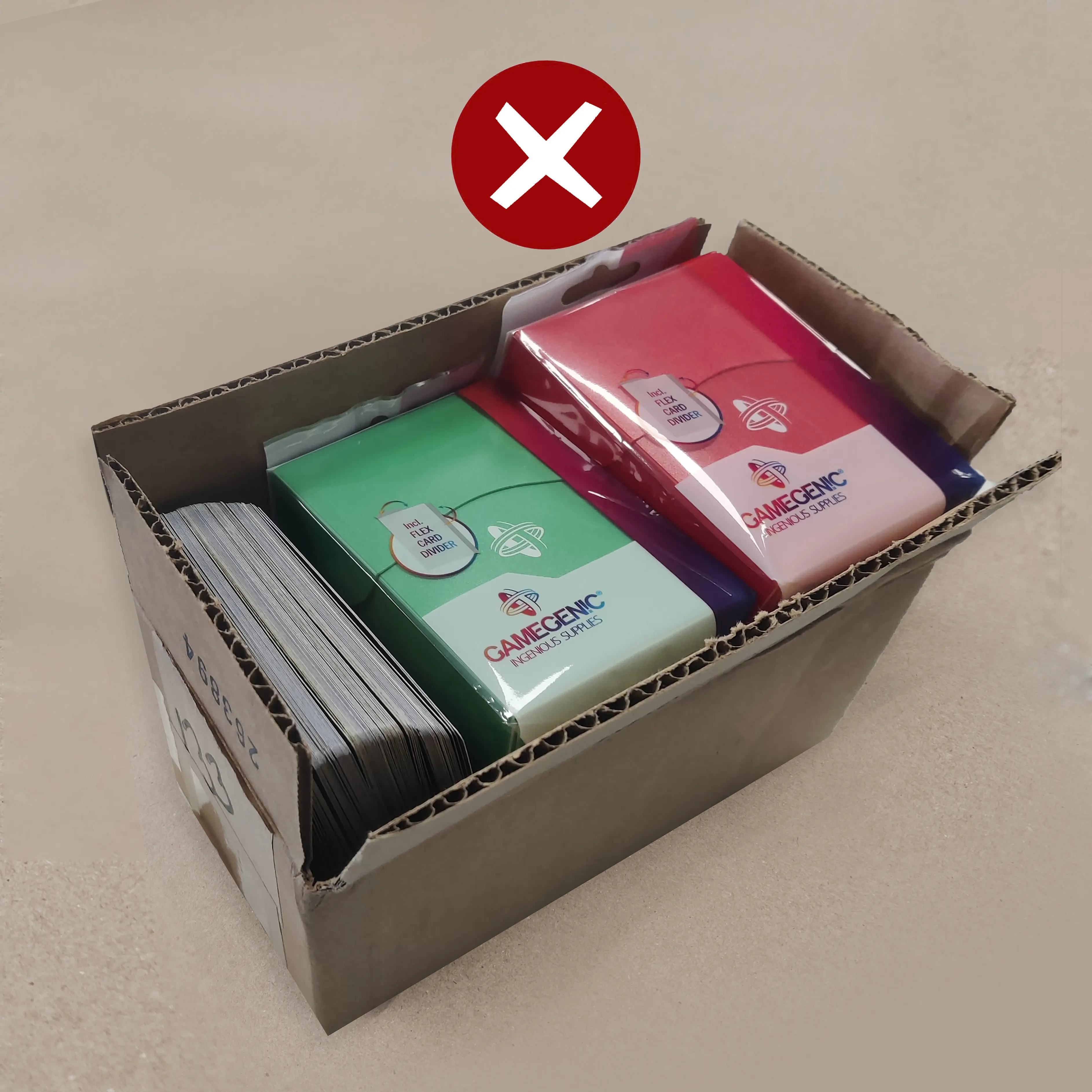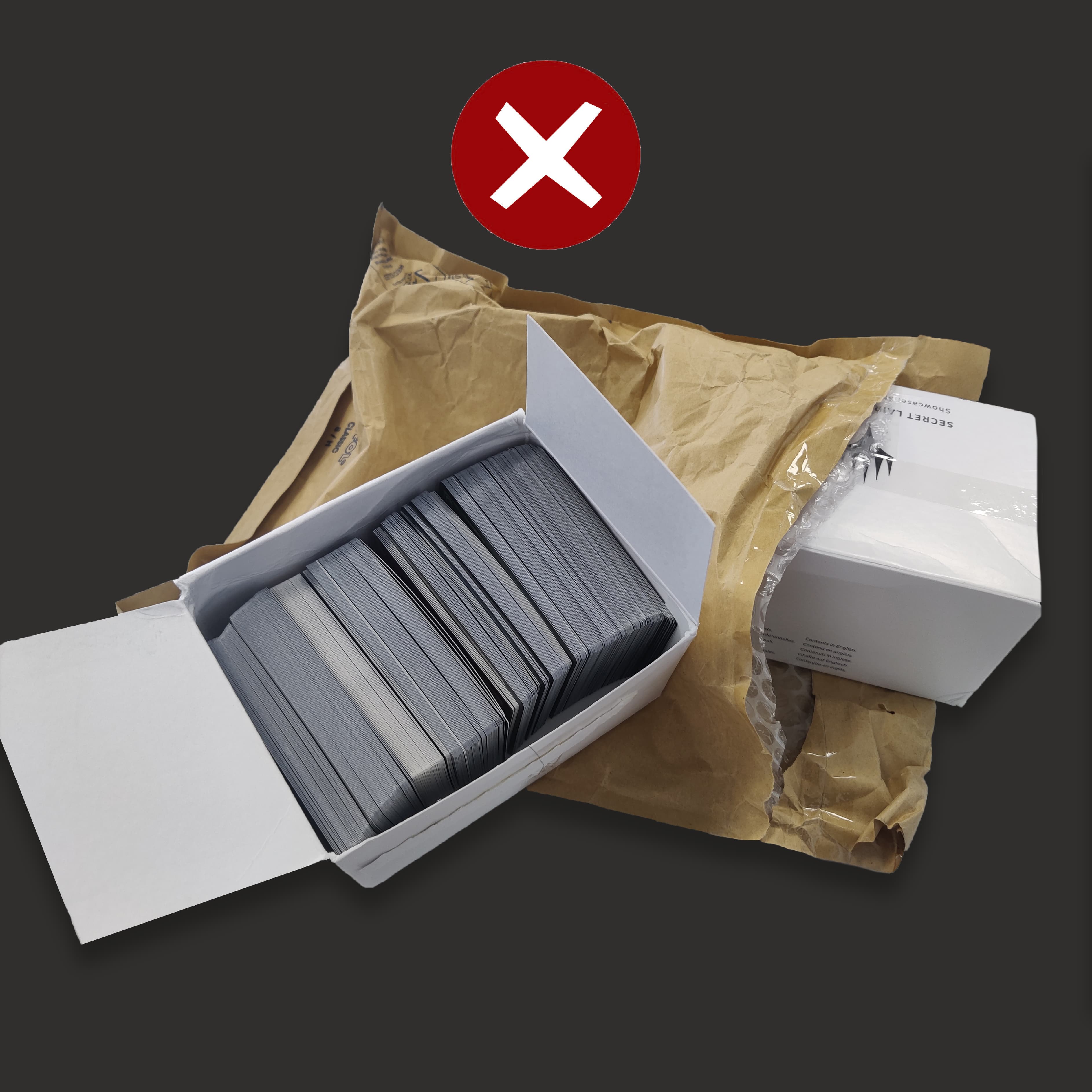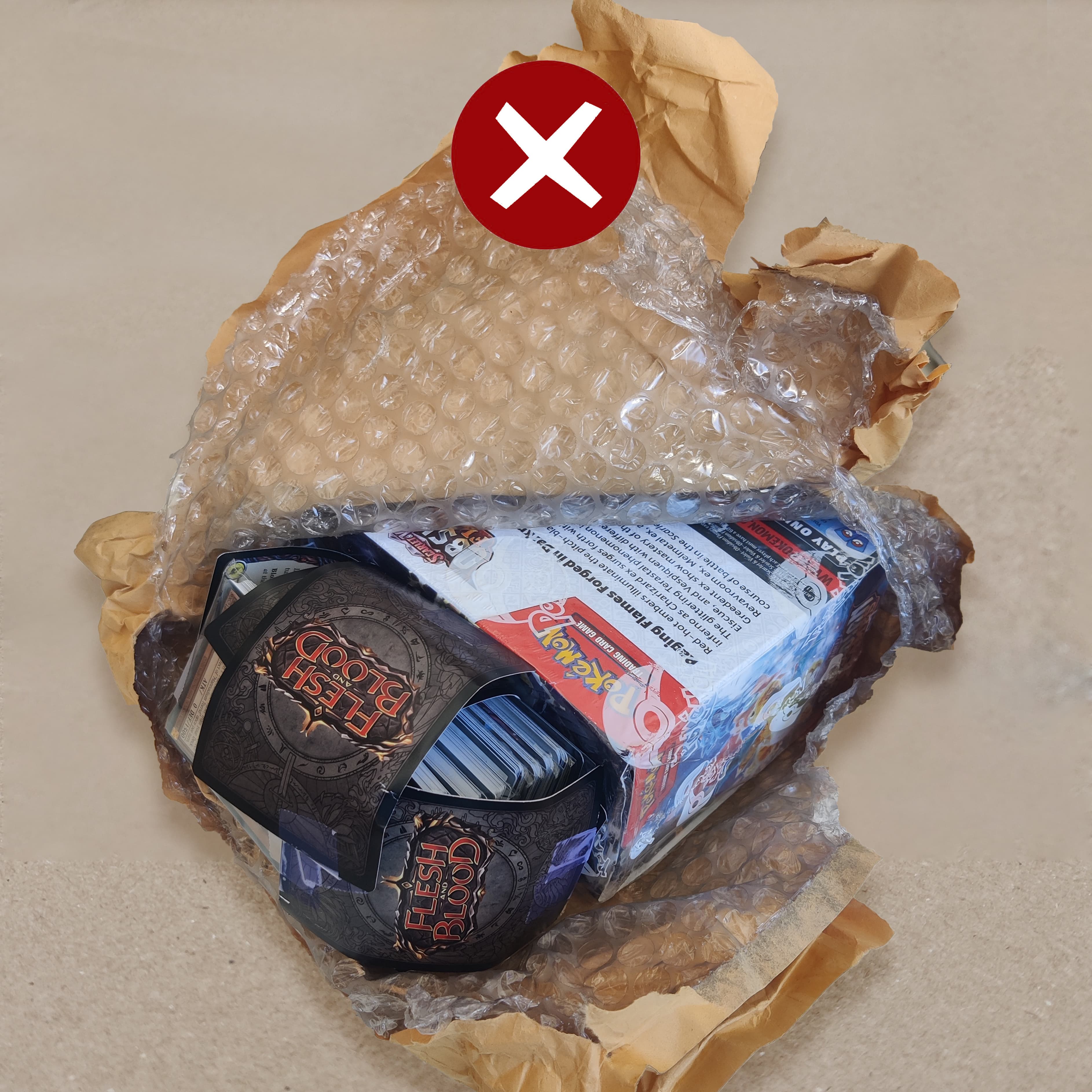

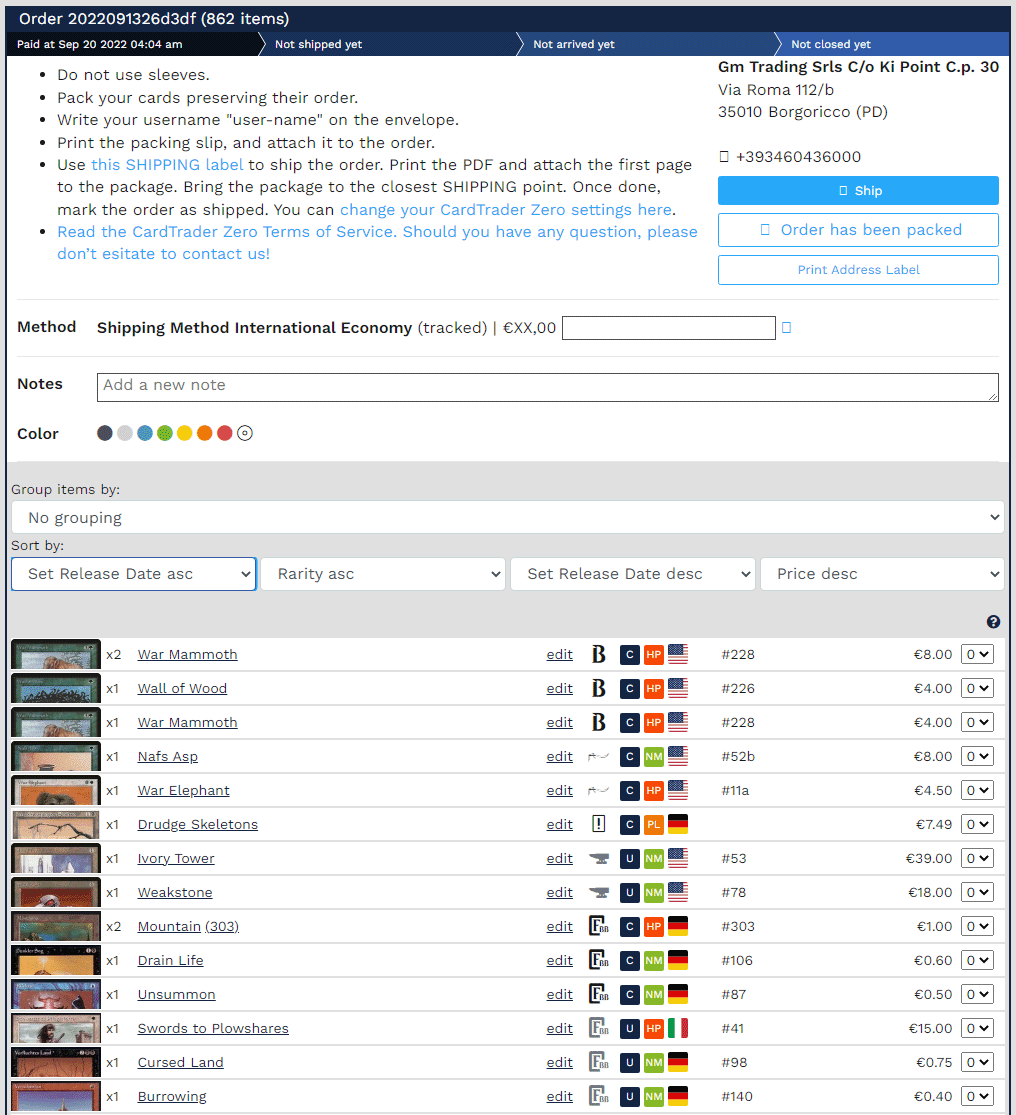
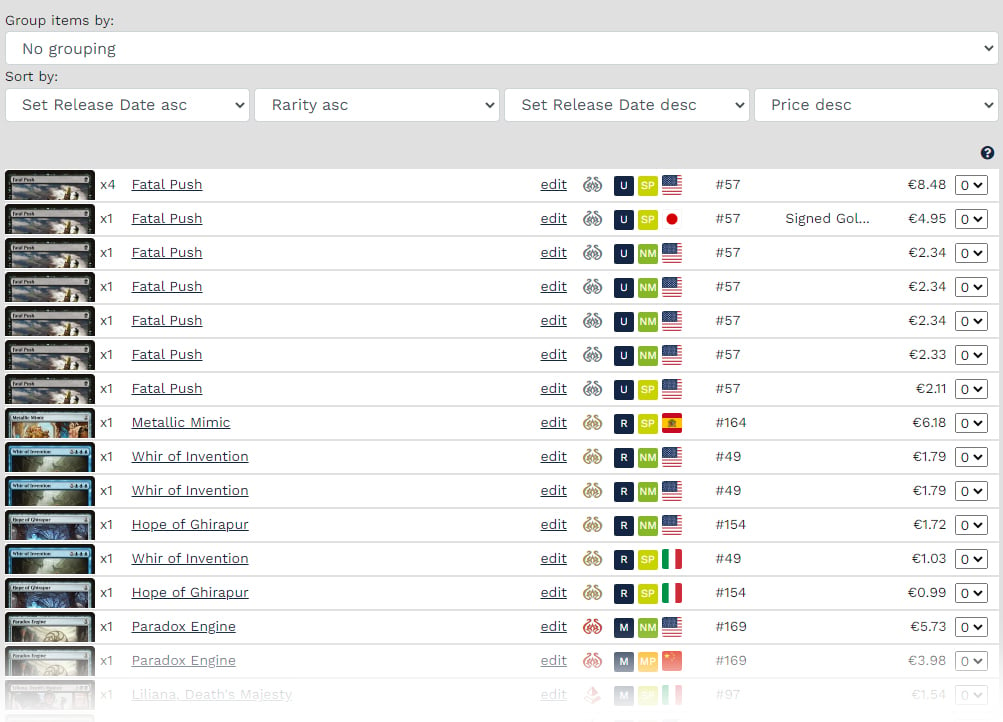
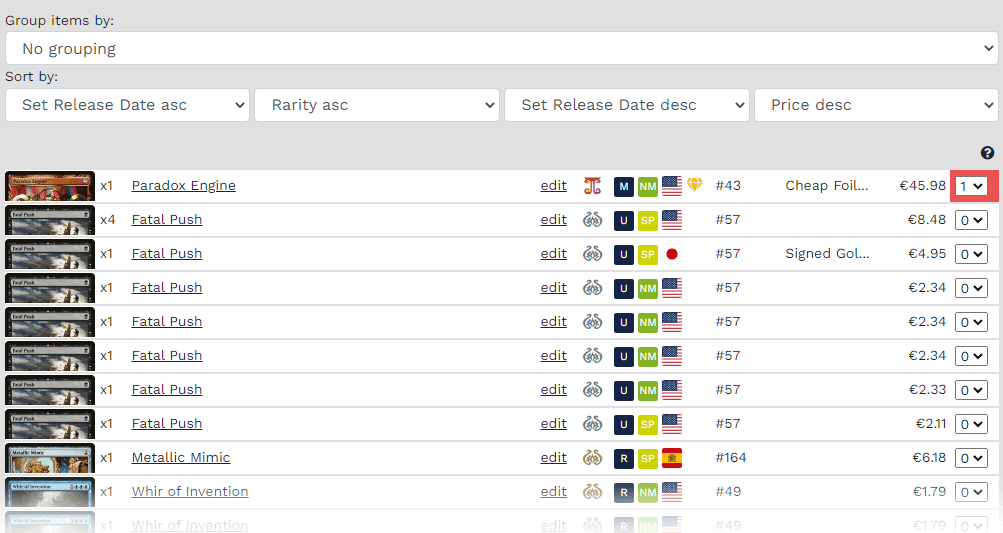



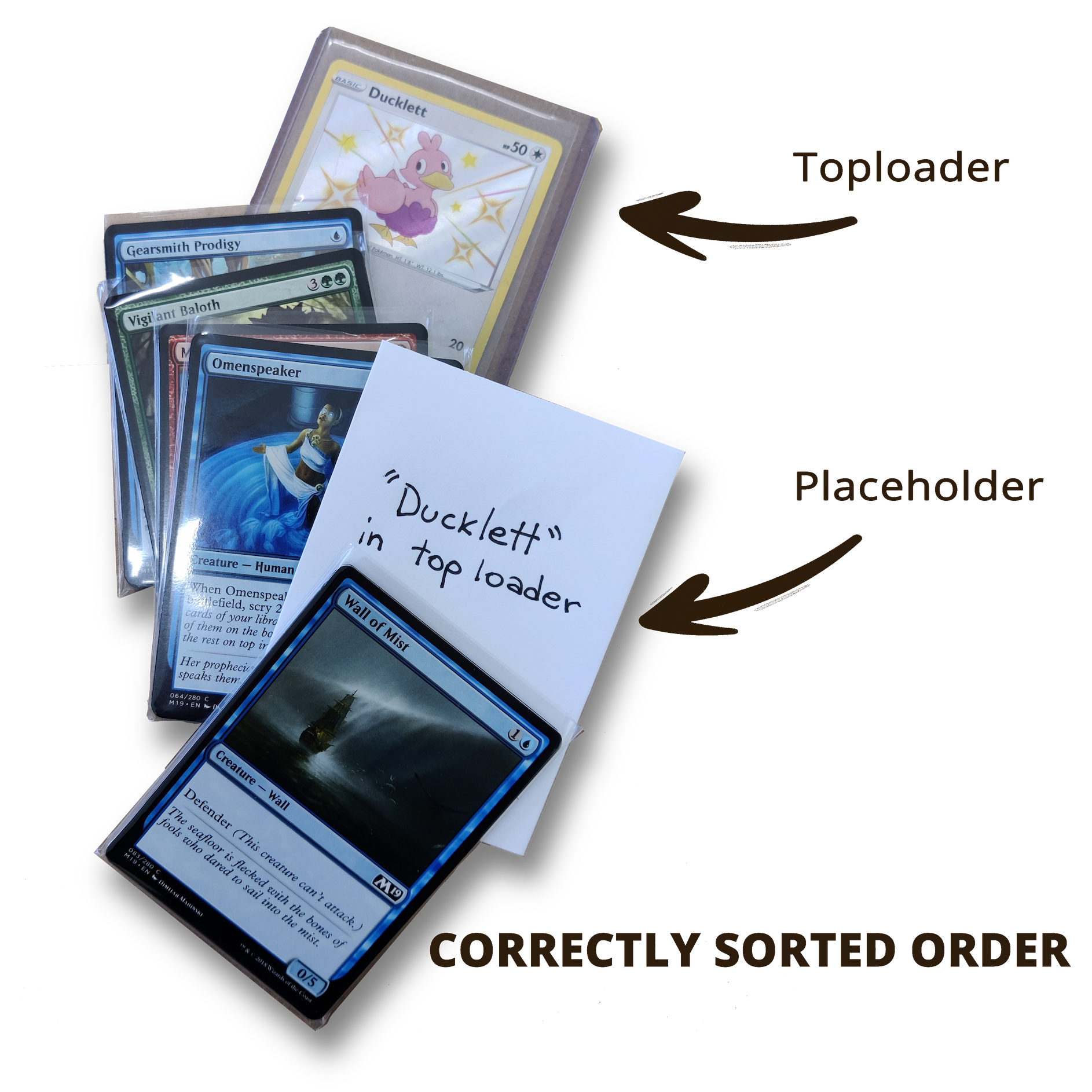
• If you have a lot of cards to send, or you don't have penny sleeves to protect them, use paper sheets to make piles of 40-80 cards:
this way, you will limit their movement and possible edge damage during the shipment.
• We advise you to use some no-value cards on the top and bottom of your piles to protect the first and last card of your order.
(Here is a picture of a perfectly made inner package with a paper sheet)



By creating multiple packs of a few cards you will not only slow down the order checking process, but you will waste time and materials unnecessarily. We encourage you to neatly group your cards into large stacks of at least 50 cards each.
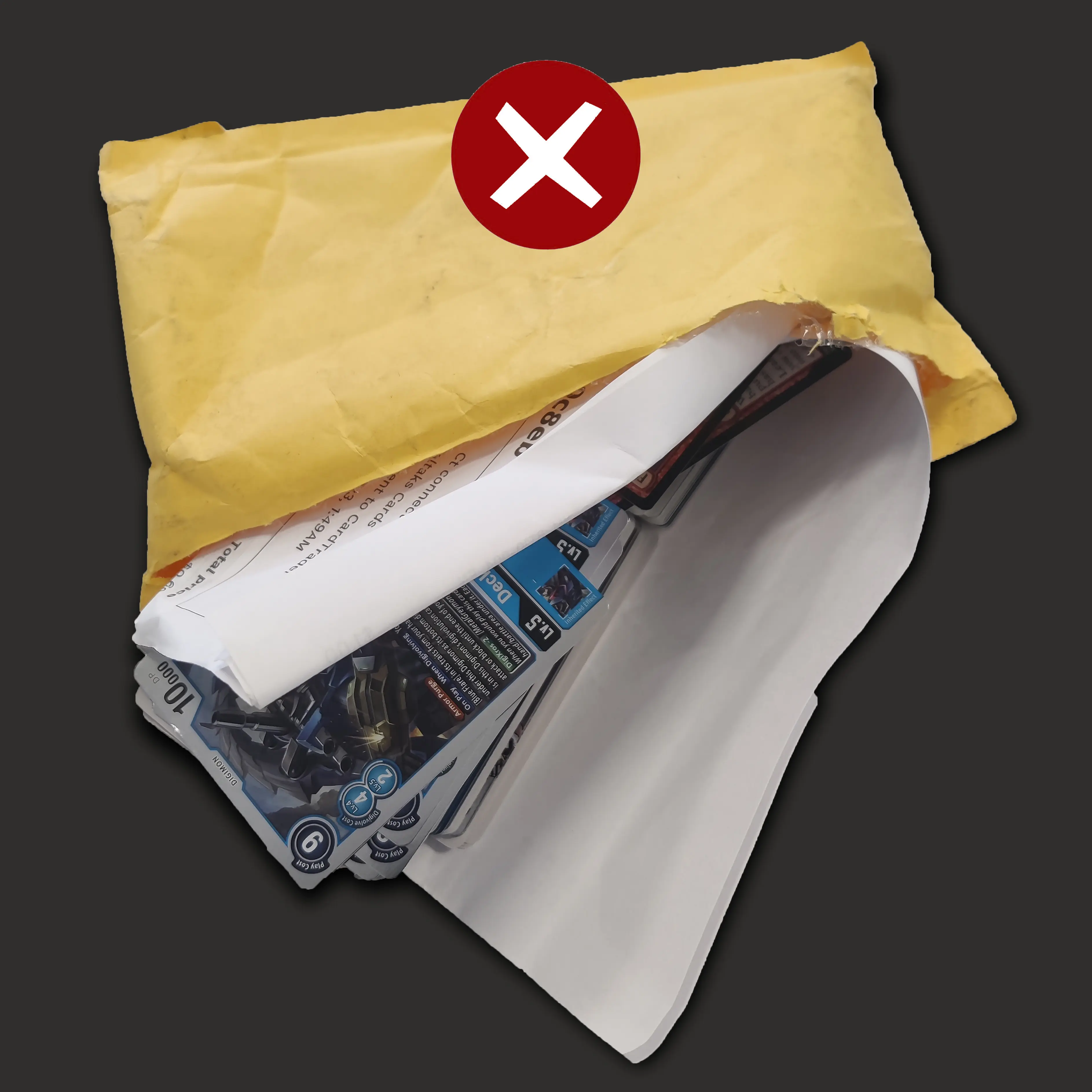
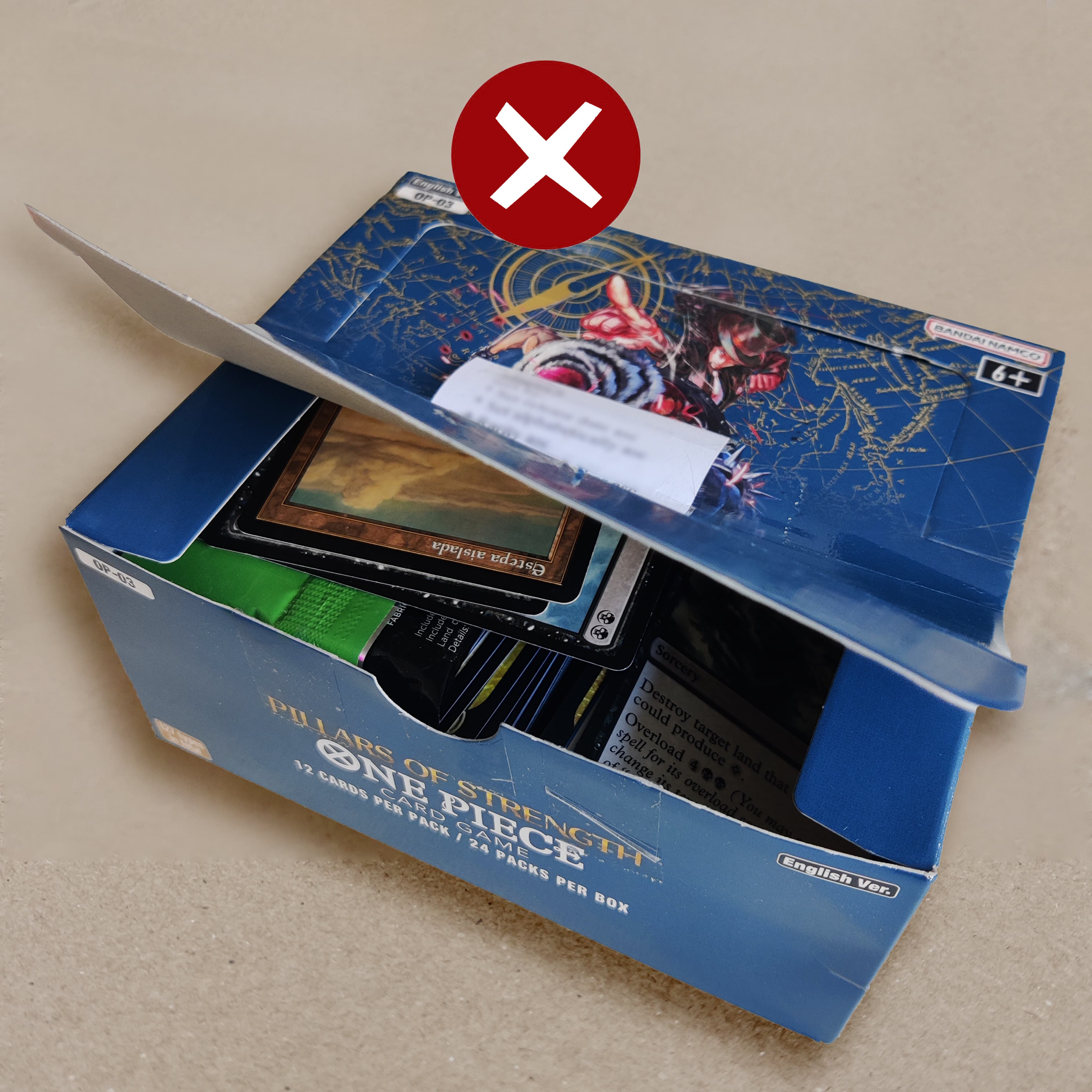
In addition to not being protected and being damaged during transport, loose cards end up getting mixed up with each other. Always remember to respect the selected order for you cards. Not sorted orders cause serious delays and will be processed at the end of the daily orders.
If you want to benefit from the service, we ask you to respect each step of our guide so that your order is properly processed.



No need to use tape or excessive layers of protection. By making the package too rigid and difficult to open, you will make the cards more easily subject to damage due to transport and opening during the inspection phase.

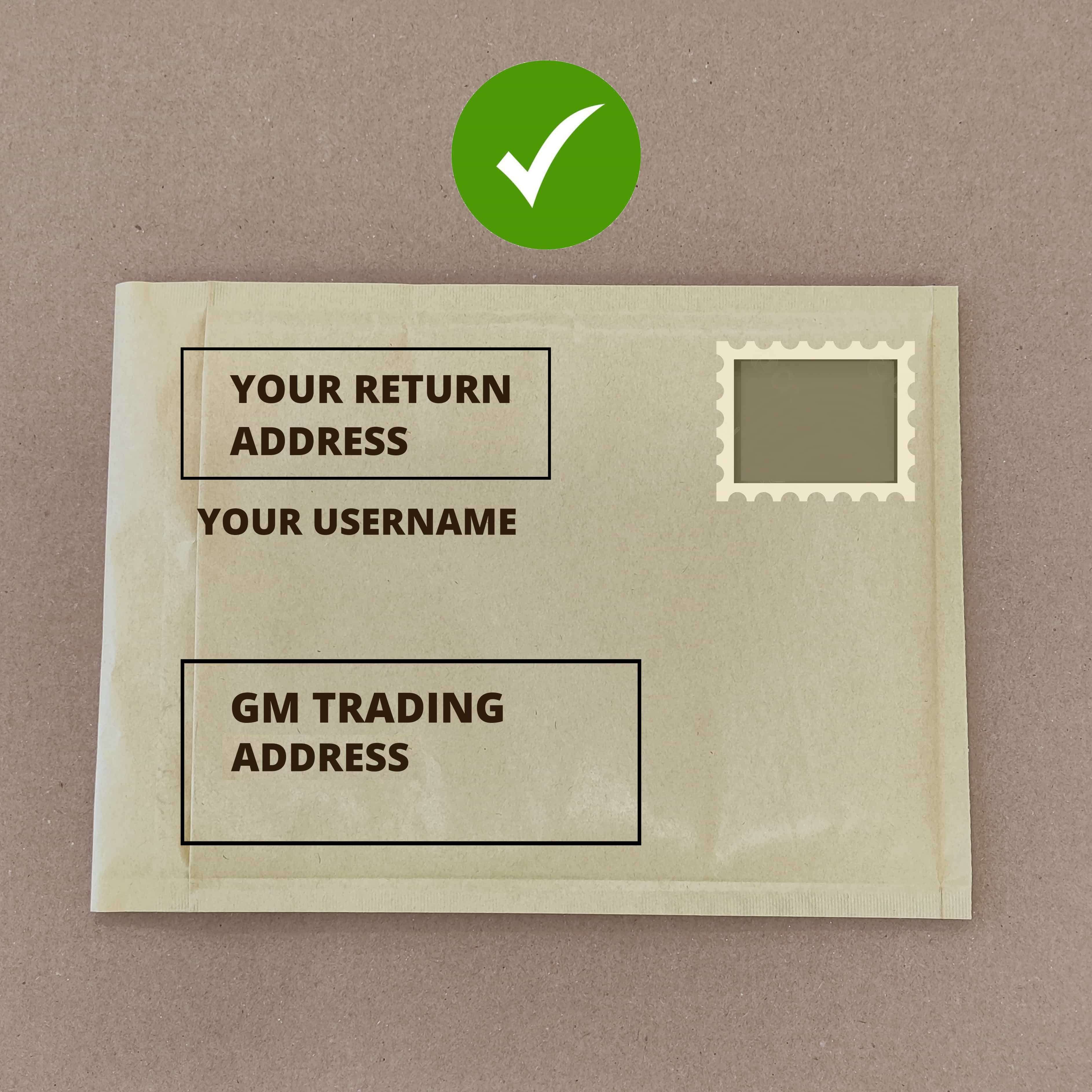
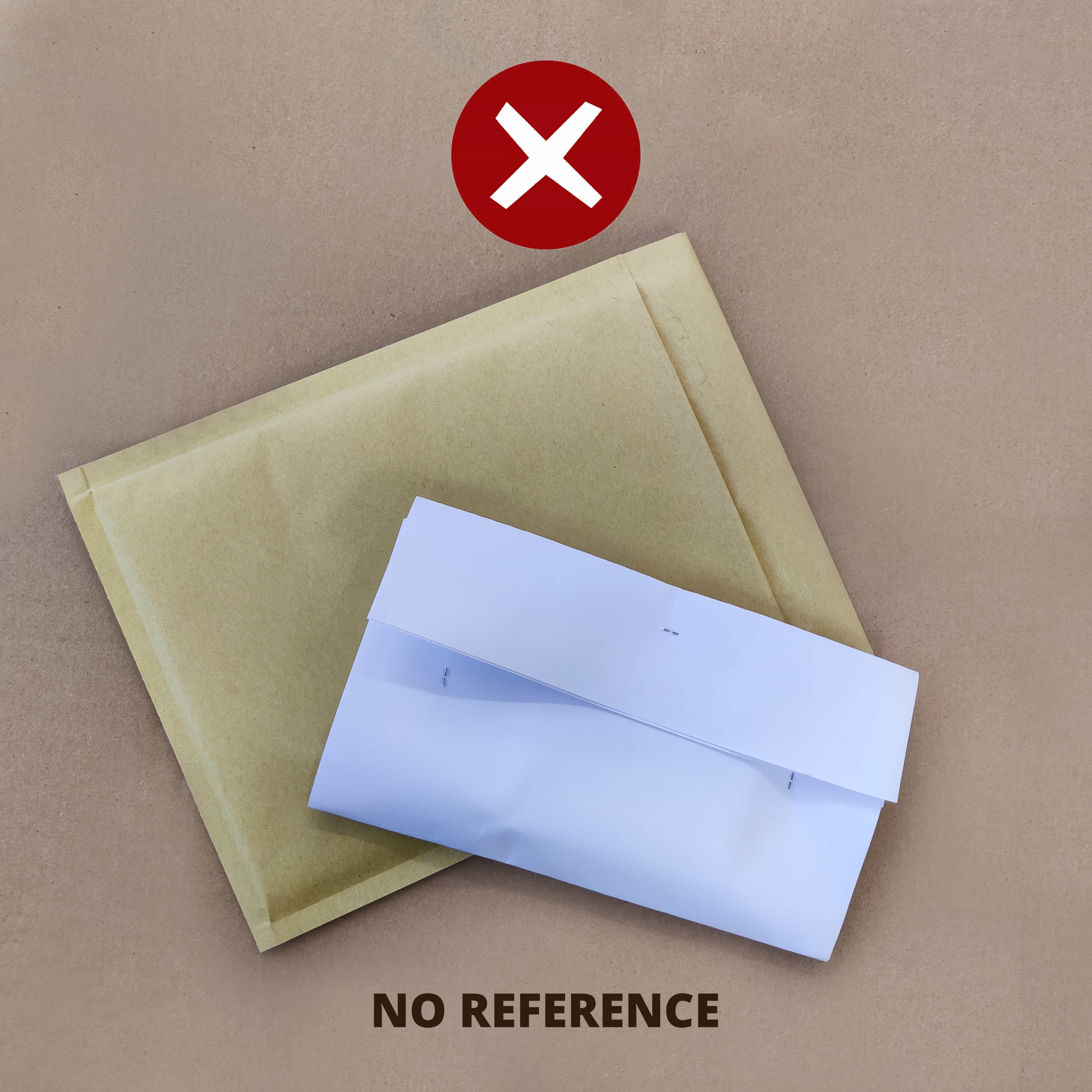
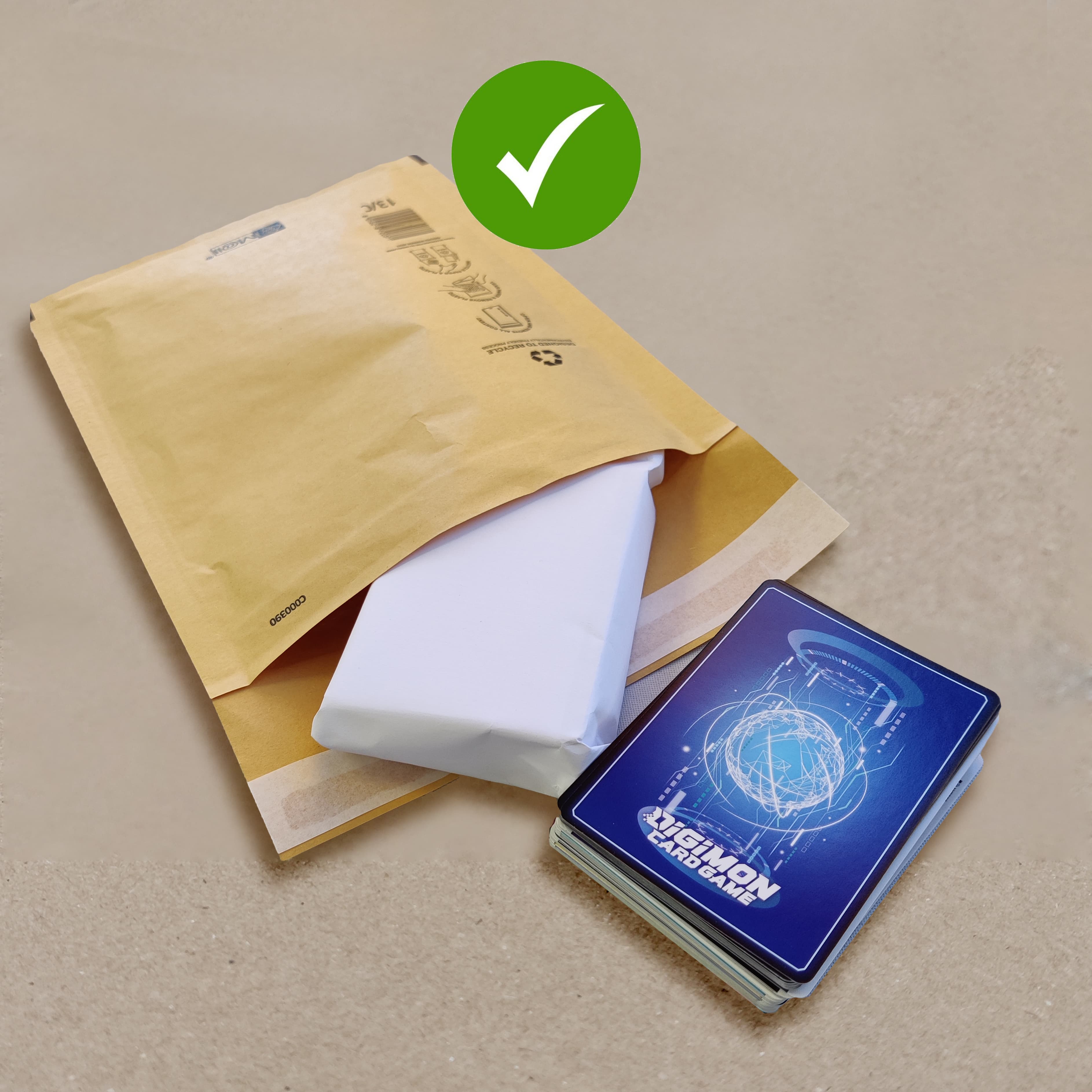
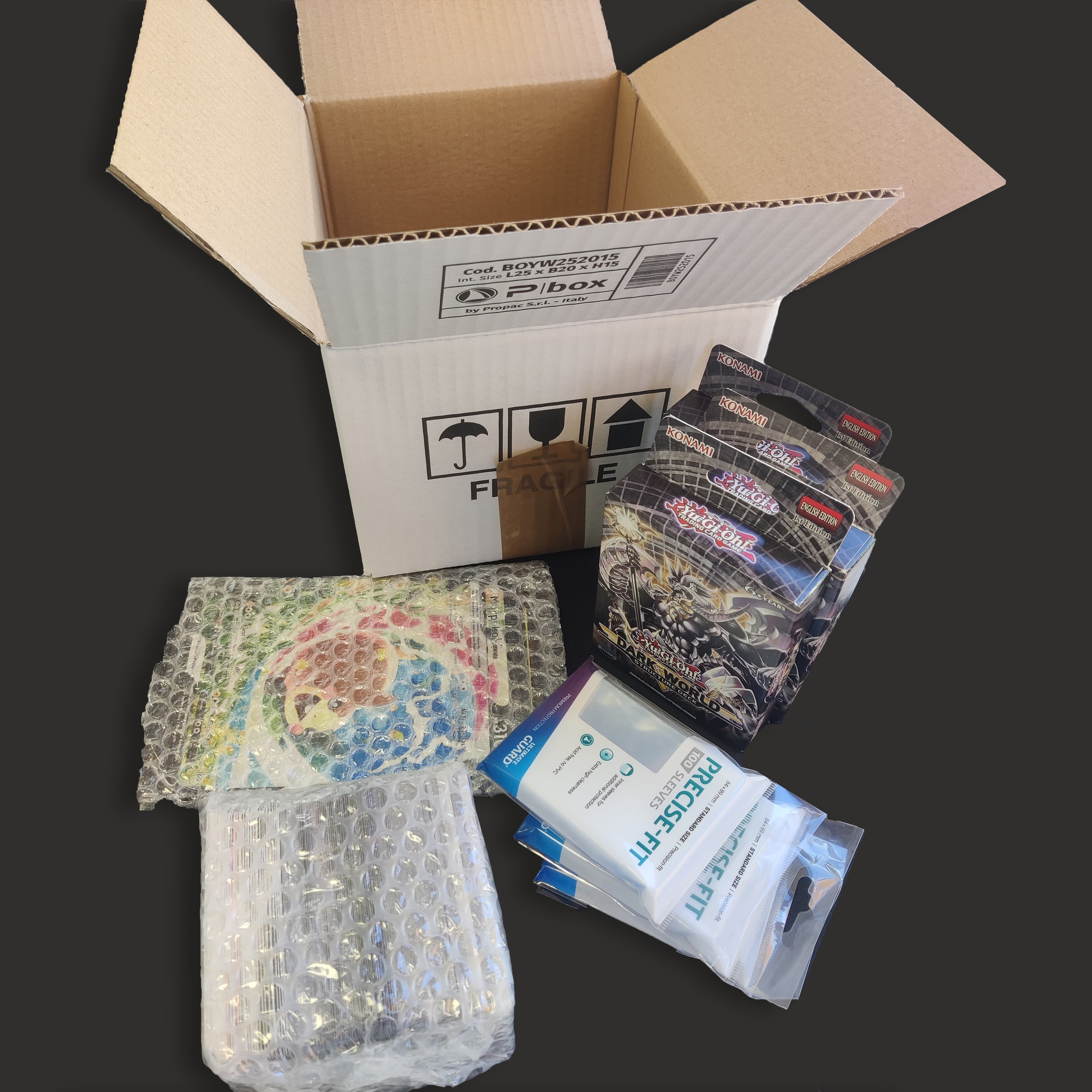
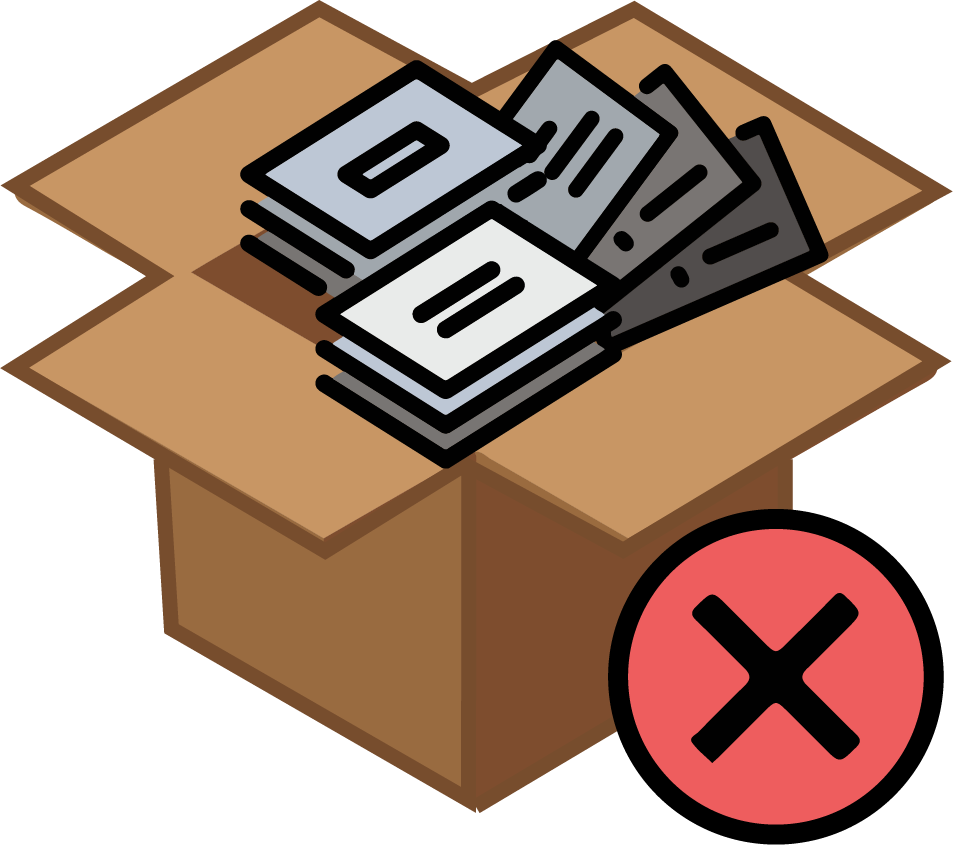
• If you sold a considerable amount of cards, avoid using smaller envelopes when sending a package to our warehouse.
The weight of the cards can damage the cards themselves during transport, avoid creating packages and envelopes where the objects are too compressed and in close contact with the packaging.
(You can see a sample of an envelope that is too small for its content in this picture)

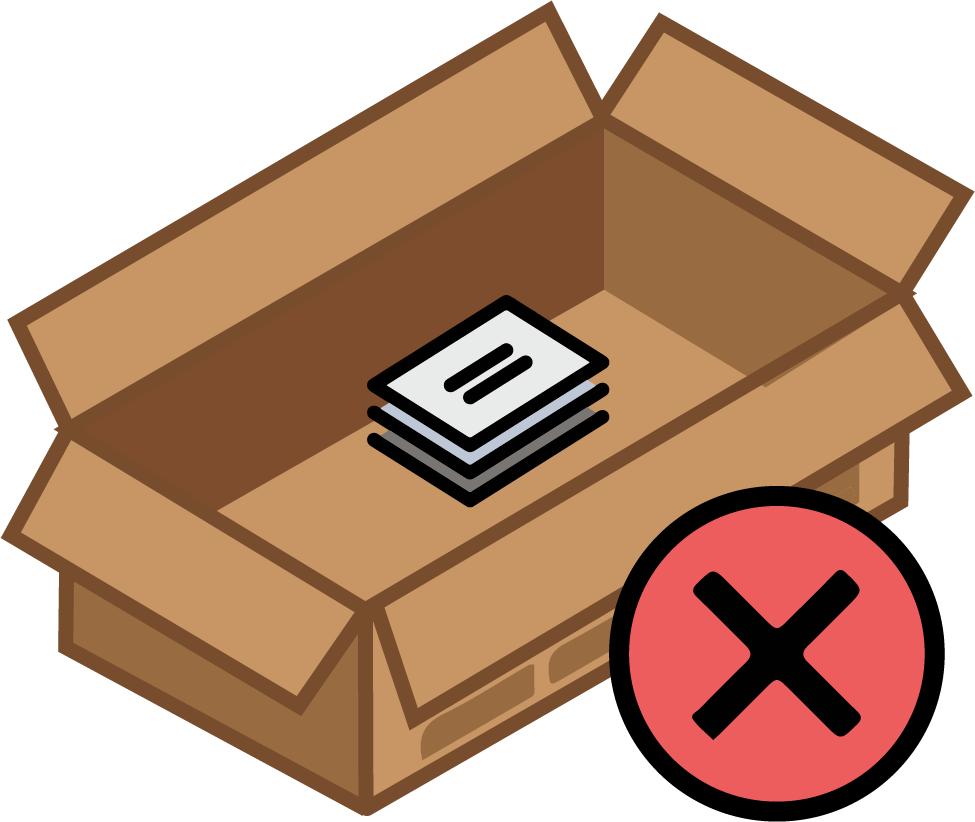
• DO NOT use boxes that are too large if you have sold a few items when a large, well-protected envelope would suffice.
We ask you to respect the environment by always using bags or boxes of an appropriate size
(All oversized boxes cause a daily accumulation of waste, which is difficult to dispose of and harmful to the environment. By adjusting the size of the shipping box you will be doing the planet and us a favor.)

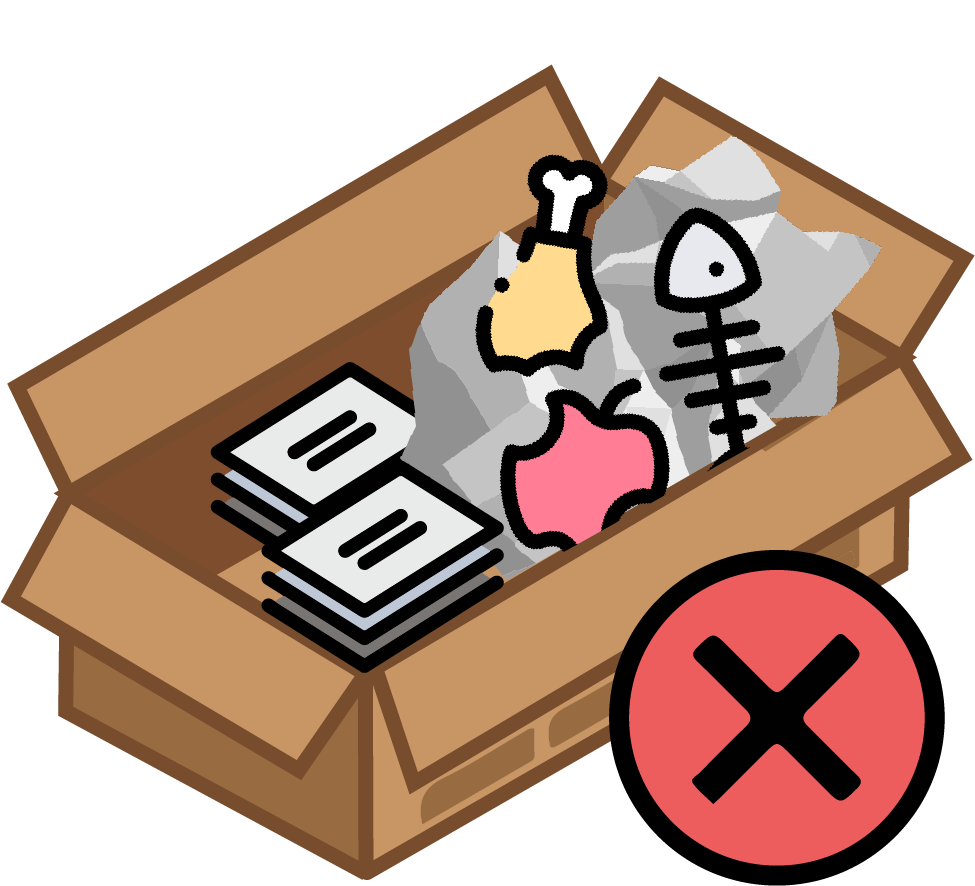
• When you add packing or protections in the shipping box of your order, please respect our work:
DO NOT send packages containing garbage, dirty, dusty, or smelly internal fillers to us.
Orders sent to us in this way will be returned to the sender.
(In this picture, you can see what not to do, we received packages containing garbage, smelly shoe boxes and packing material with food remains.)


